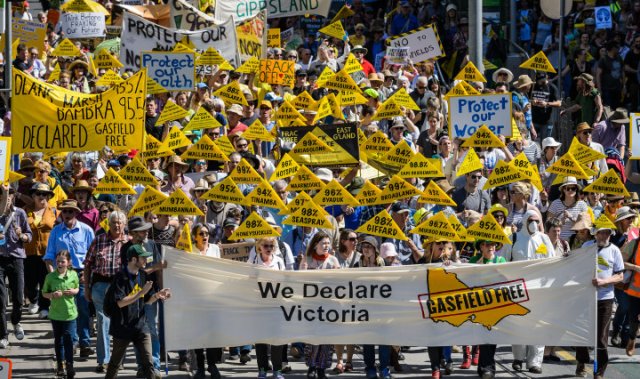
The Victorian Labor government has announced an “ambitious and achievable” Victorian Renewable Energy Target (VRET). This target will commit the state to generating 25% of its electricity from renewable energy by 2020, and 40% by 2025.
While details of the VRET are yet to be fully fleshed out, it is set to be based on a similar mechanism to the scheme used in the Australian Capital Territory (ACT), which has managed to sidestep the uncertainty that has plagued the renewables industry in recent years. ACT deputy chief minister Simon Corbell called Victoria's announcement “a game-changer”.
A key motivation for the decision identified by the Victorian energy minister, Lily D'Ambrosio, was “restoring the confidence needed to invest”.
National tally
The federal Renewable Energy Target (RET) was reduced by 20% following the Warburton Review in 2014. Since then, state and territory governments have announced their own targets to support the industry.
Earlier this year, the ACT announced it would bring forward previous commitments. It is now aiming to meet 100% of its electricity needs from renewable by 2020.
In 2014, South Australia announced a 50% target by 2025. More recently, Queensland committed to generating 50% of its energy from renewable sources by 2030.
Based on forecasting by the Australian Electricity Market Operator, these commitments add up to a considerable expansion of renewable energy. In total, these commitments represent 56 terawatt hours (TWh) each year, above baseline generation. Baseline generation is renewable generation that existed before 1997, almost exclusively hydro power.
The remaining states already have renewable generation and these facilities presumably will not be torn down. So even assuming that these states do not build a single new project, in combination with the targets, Australia is headed towards a total of 61TWh above the baseline.
This compares to the current national target of 33TWh. If the states fulfil their commitments, they will deliver almost twice as much renewable generation as the national RET requires.
If we add baseline hydro back into the equation, total renewable energy generation in Australia is set to be at least 77TWh by 2030. Depending on how electricity demand changes, and how rooftop solar is included, Australia is on track to meet 30-35% of its power demand from renewables by 2030.
What does the target mean for coal?
Victoria has always been a major exporter of electricity in the National Electricity Market. In 2014-15, it generated more than 55TWh of electricity and exported over 8TWh. Generally, Victoria exports to South Australia, New South Wales and Tasmania — although Tasmania's flows have been more interesting in recent times.
It is unlikely that Victoria will substantially increase exports. Indeed, it has limited ability to do so. The South Australian government recently announced funding for a study into new interconnection for South Australia to import power when required, and export more renewable energy to other markets.
Consequently, such a significant increase in renewable generation in Victoria — expected to be in the vicinity of 5400 megawatts — will have dramatic implications for the state's existing power stations.
An increase in market share of renewables, from roughly 14% today to 40% in 2025, will necessarily come at the expense of market share for existing power stations. In Victoria that means brown coal, Australia's most carbon-intensive power source.
The question now is can the brown coal generators collectively survive such a reduction in market share? And if they cannot, who drops out, and when? Or perhaps brown coal can be progressively phased out without too much pain.
This is, however, good news for Australia's national climate change mitigation commitments. At average Victorian emissions intensity, by the time the 2025 Victorian target is fulfilled, the new renewable generation in Victoria would be avoiding the emission of some 18 million tonnes of CO₂ per year.
National policy implications
At the national level, several different policies and pathways have emerged through the election campaign. These include a national 50% renewable energy target, an emissions trading scheme, a brown coal exit plan and potential modifications to the government's cap on emissions (known as the safeguard mechanism).
Whatever emerges at the federal level, the Victorian scheme is well adapted to future changes to both the energy market and energy policy developments. Indeed, it is expressly designed to complement national schemes in the long term, and to provide certainty and confidence for investors in the short term.
In response to the VRET, the Business Council of Australia has called for climate policies that are “integrated with broader energy policy”. A decade of policy uncertainty and toxic political debate has thus far prevented this from occurring.
As the Grattan Institute reported earlier this year: “An economy-wide carbon price remains the ideal climate policy. But pragmatism and urgency demand a practical, next-best approach”.
Given the popular support for renewable energy, perhaps this policy is actually such a pragmatic approach.
[Dylan McConnell is a Research Fellow, Melbourne Energy Institute, University of Melbourne. This article was originally published on The Conversation.]
Like the article? Subscribe to Green Left now! You can also like us on Facebook and follow us on Twitter.